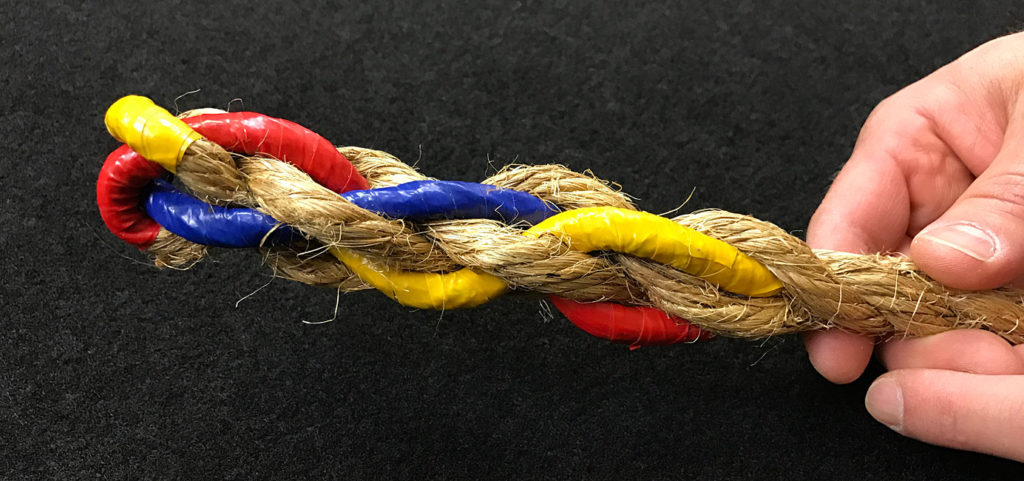We’re wrapping up over a year of our Knot of the Week series today with the Back Splice. Don’t fret, we’re certainly not done with knots on ITS, we’re just working on a special Black Works project that we’ll be excited to share with you when it’s completed.
The Back Splice is comprised of not just the splicing, but also includes a Crown Knot at the start. The Crown Knot is a great way to keep a 3-strand natural fiber rope from fraying, but when combined with the splicing demonstrated in the video below, the Back Splice creates a better looking finish to your ropework. On a side note, you might remember the Fast Rope we created years back on ITS. While comprehensive, I finished that spliced Fast Rope with whipping rather than a Back Splice. As I’m sure you’ll agree, a Back Splice on that project would have been a better looking way to finish it. Check out the 3-Part DIY Fast Rope Series here.
Splicing creates a permanent, secure modification to a rope that maintains the original weight rating. It’s also the preferred way to join natural fiber rope like manilla, jute and sisal together. No matter how strong a knot is, it can always come untied and reduces your line’s weight rating anywhere from 20% to 40% depending on the knot. You can use synthetic rope for splicing as well, you just need to ensure there’s no slipping of the individual strands.
While there are many different kinds of splices, the concept is the same in each. You’re simply separating the strands of the rope and weaving the working ends back into the standing part of the rope. As you’ll see in the video above, my way of remembering this is remembering that each line goes “over” the standing part. It will hopefully make more sense as you watch the video. I also used different colored electrical tape as a training aid, so it’s easy to see what each individual strand is doing as it’s spliced.
Back Splice » Splices
(Strength: 5/Secure: 5/Stability: 5/Difficulty: 3/) See below for what these ratings mean.
Ratings
Strength/Security/Stability/Difficulty
Each knot will be assigned a rating from 1-5 (1 representing the lowest score) based on the following four properties:
Strength – All knots will weaken the strength of a rope, however, there are knots that are stronger than others. The scale here will reflect how strong the rope remains with the specified knot.
Security – The security scale refers to how well the knot will stay tied, and resist coming loose under a normal load.
Stability – Stability refers to how easily the knot will come untied under an abnormal load (i.e. the knot being pulled in a direction it was not intended to) A lower score here represents instability.
Difficulty – The lower the number, the easier a knot is to tie.
